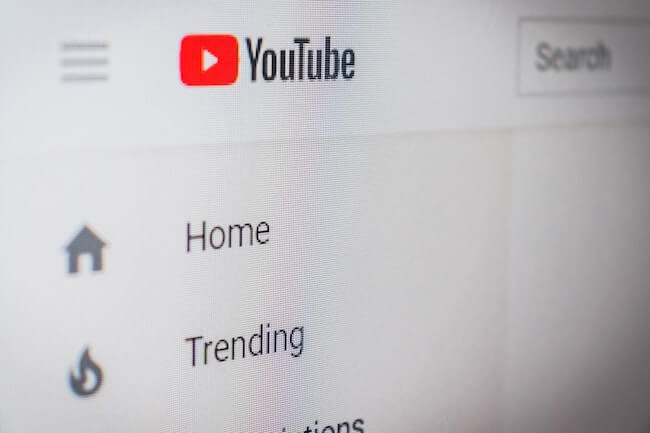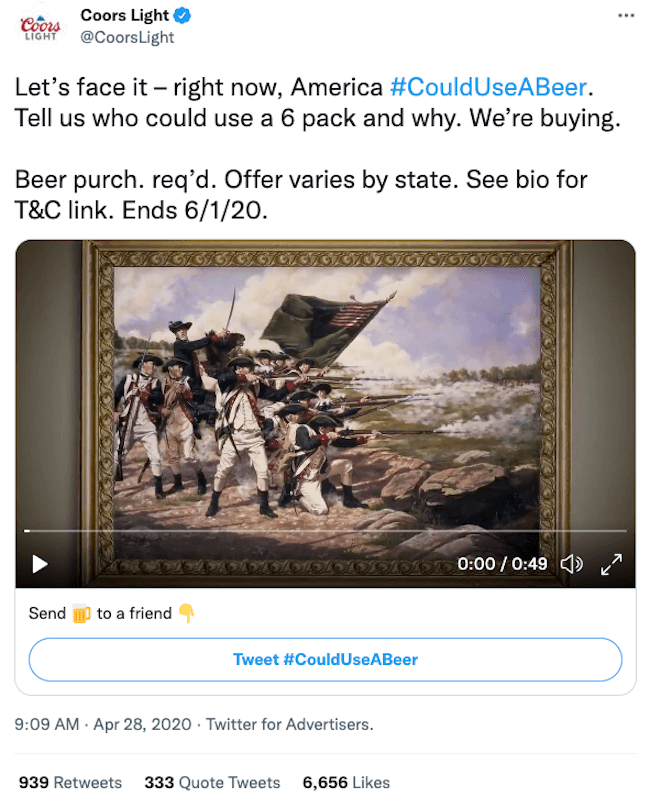What is customer engagement?
Customer engagement is the connection between a customer and a brand. Broadly speaking, customer engagement (CE), or customer-brand engagement (CBE) encompasses the customer’s relationship with a business.
When we look at customer engagement we’re exploring how customer participation occurs, and how often.
For most companies, an exploration of the topic will also involve trying to understand how customer engagement relates to the success of the business in terms of sales, loyalty, and the emotional feelings & attitude toward the brand.
Highly engaged customers buy more, promote more, and demonstrate more loyalty. Providing a high-quality customer experience is an important component of your customer engagement strategy.
Dimensions of customer engagement vary by industry, but could include:
- Longevity: The length of time over which interactions are spread
- Proactiveness: Whether a customer engages with a brand of their own accord, without prompting
- Repetition and frequency: Whether the interactions are frequent and similar, or sporadic and varied
- Context: The situation where interactions happen, for example, post-purchase, during consideration, only when there’s a promotion happening, etc.
- Volume: How much interaction takes place over the whole customer lifecycle
The concept of customer engagement only fully emerged in the digital era thanks to the emergent ability to capture engagement through various data sources. Engagement became more prevalent and more visible as two-way communication between customer and brand developed over online channels. Engagement isn’t only digital, of course – it can also happen in person and through traditional communication channels.
Download the 2026 Global Consumer Experience Trends Report
Customer engagement, customer satisfaction and customer experience (CX)
To understand what customer engagement is all about, we have to separate it from a few related concepts.
Customer experience (CX) vs customer engagement (CE)
CX describes everything that happens for a customer in relation to a brand, from seeing its billboard ads beside the highway to visiting the bathrooms of a flagship store.
Working on CX is about putting yourself in the customer’s shoes and considering how to provide the best possible experience across all touchpoints.
Customer engagement, however, brings in the customer’s own agency and choice, not just what the brand presents to them. In CE, the customer is seen as an active participant rather than a recipient of an experience. CE explores how they react and respond, how they reach out to you, their relationship to your content and marketing, how they talk about you to others, and whether they are passive, promote or detract. Put simply – it’s a dialogue.
Customer satisfaction vs customer engagement
These might sound like two sides of the same coin, but the overlap between them shouldn’t be taken for granted.
A satisfied customer might not ever become engaged. They could be a lifelong shopper at your hardware depot but never take part in a customer loyalty program, follow the brand on social media or make a comment online. Likewise, an engaged customer might make few purchases from a luxury department store, but spend hours chatting on a brand-owned forum or interacting with the company’s aspirational posts on Instagram.
So engagement isn’t the same as satisfaction. But satisfaction can be an outcome of customer engagement, and it can be a precursor for it too.
What does customer engagement look like?
It’s both general and selective
Your target audience might engage with your business at different levels. For some, it happens at the product level (for example, a new car buyer joining a Mustang owners group on Facebook). For others, it’s at the brand level (Apple enthusiasts may be able to relate to this).
Engagement may be quite abstract – expressing a preference for Visa or Mastercard, for example – or highly specific, such as visiting a particular store branch in their region because it’s better managed and more welcoming than others.
It’s online and offline
Your customer engagement strategies will also vary on and offline, and depending on the kind of offering a business provides. In a traditional model, where sales are discrete events and products and services are used away from the point of sale, engagement may not be captured by your company. In a situation where products and services may be supplied and consumed online, engagement with the brand happens as a matter of course, and can be easily monitored and tracked.
It’s sometimes integrated with product use
It may in some cases be indivisible from the product or service itself. In these cases, the question is not whether or not the customer engages but how meaningful those engaged moments are.
Here are a few examples of what engagement might look like in practice.
1. Making a complaint or leaving a compliment
A customer reaches out to give feedback. Whether they comment in a public forum, on a social media platform, or approach you via email, the feedback can be a telling measure of a customer’s loyalty and sentiment towards your brand. Notably, if a customer complains, the stakes are high and there’s a valuable opportunity to close the experience gap and win their loyalty by taking steps to meet their expectations. Additionally, if the customer shares a compliment, it’s important to acknowledge it – and possibly offer a small token of appreciation.
2. Online reviews and posts
A customer waits for hours on hold to a utilities company, and while the minutes pass, leaves a one-star review on a site like ReviewCenter or TrustPilot. In this scenario, they are not sharing their opinion with friends and family in their sphere of influence, but doing it anonymously. Several review sites also allow for comments to be shared in addition to a rating, this would be similar to customers making a compliment or complaint.
3. Participation in loyalty programmes
A customer signs up for a loyalty card or app which they use to collect points on future purchases. They enjoy collecting points, achieving status and redeeming points for products or services, which becomes a secondary motivation in itself. Hotels and airlines are examples of successful loyalty programs.
4. Contributing ideas, suggestions and requests
A loyal customer comments on your Instagram post, shares their thoughts with an employee, or sends a message asking about a specific product. They also make contributions like “would love to see this in green!” or “it would be nice if your store had extended hours on weekends.”
5. Using online support and customer service
A subscriber to a SaaS platform wants to know how to use the tool to solve a specific problem. Unable to find the answers in the product’s knowledge base, she contacts customer service to ask for advice and is referred to a product specialist who answers her question. This is an example of someone engaging deeply with a service they’ve paid for, and having a better experience as a result.
6. Purchasing and using your product/service
Sometimes customer engagement is the simple act of using your product or service. Depending on what that is, this could either be something that they engage with multiple times a day, or quarterly or annually. These differences in frequency create different expectations from your customers – so you’ll want to consider how they expect you to show up when they do engage with your company.
Some individuals become engaged with a brand to the extent that it’s part of their lifestyle or belief system. Large and long-standing consumer brands like Disney and Coca-Cola have ‘super fans’ whose lives revolve around their attachment to the brand and their collections of products or memorabilia. Disney understands the value of “super fans” – and has therefore acquired other “super fans” franchises such as Marvel and Star Wars. Additionally, Disney partners with high-end retailers and big box retailers to expand their brands in different ways their fans want (or can afford) to engage with them.
Then there are the disengaged customers. They might be positive, like the satisfied hardware store customer we described above. Or they may be negative towards your brand, for example customers of a competitor who have developed an idea of your products and services only through the lens of someone else’s products and marketing.
Why is customer engagement important?
We can talk about the importance of customer engagement across a couple of verticals:
- The value of customer interactions
- Customer engagement as part of customer experience management
The value of customer interactions
In general, engaged customers are customers who are more likely to stick with you, and every interaction is a chance to build a relationship. Whether it’s someone calling into your contact center with an issue, or someone posting on social media that they love your product, every instance of a customer crossing your path is a chance to build rapport, course correct, or champion loyalty.
Customer engagement as part of the customer experience
How you manage customer engagement is incredibly important. People should never feel like they’re shouting into a void; instead, the onus is on you to monitor every channel in your portfolio and respond proactively to interactions as they occur. Doing this well – at every stage of the customer journey – is a cornerstone of customer experience management, and a key driver of customer retention.
In both cases, customer engagement can be a huge facilitator for improvement across the board. Customer complaints and issues are goldmines when it comes to understanding where your experience gaps lie, while customer compliments are marketing opportunities – and moments that can help you turn people into lifelong fans – in disguise.
Why you need an effective customer engagement strategy
If you don’t have a customer engagement strategy, you’ll be missing out on opportunities to interact with customers and build lasting relationships with them.
But, if we take things back a step, without an effective strategy in place, you probably won’t know what to look for and how to track the right data. A robust strategy here will help you target your efforts where they are most impactful – and maximize outcomes that are sustainable and positive over the long term.
Your goals with this might be:
- Word-of-mouth marketing
- Brand strengthening
- Loyalty
- Increased sales
- Better knowledge of your customer
Your strategy will help you work towards them by unpicking the building blocks for each one. For example, does social media sharing go hand in hand with increased loyalty? Do customers who contact you with an issue end up more likely to repurchase after your resolution, or less?
Building a strategy around customer engagement effectively means working through hypotheses like these, learning from what you uncover, and then making changes that can move the needle in the right direction.
There is no single customer engagement method that works for every company across all industries, but a sincere focus on empathy, clarity, and simplicity in your dealings with customers and prospects should be the basis for all of your customer engagement activities.
Three steps to smarter customer engagement
1. Research
Collect data and understand what engagement looks like in your unique business. As well as collecting operational data like loyalty programme numbers, product or service usage, social shares, measurable contacts, and support cases, find out about the context of engagement from your customer’s perspective. Explore what motivates customers to engage with you by collecting experience data from them via feedback and service channels.
2. Analyze
Having explored the kinds of engagement that are happening in your business, the next step is to relate them to business outcomes such as sales, NPS, CSAT and customer effort scores.
Additionally, you can explore Experience Data points like intent and effort by leveraging text and speech analytics tools. Digging into the sentiment and emotions that underlie customer engagement will help you gain a better understanding of what drives each interaction.
3. Iterate and innovate
Now you’re ready to put your findings into action and close the loop between action, measurement and results.
How to create a customer engagement strategy
The kind of customer engagement strategy you choose will depend on your research findings, your resources and the kind of industry you’re in. It’s also important to consider how to improve customer engagement on a channel-by-channel basis. There’s a big difference between online and offline engagement, for example. How your customer engages also has implications for how you nurture the relationship.
An unengaged but positive customer might respond to invitations to engage that focus on price, value and ease – ‘join our loyalty programme and save 5% on these regular purchases’. A customer who is already heavily engaged could become part of a brand ambassadorship programme where they are rewarded for recruiting a friend.
Here are a few ideas for boosting engagement to inspire you for your future customer engagement strategies.
1. Build engagement opportunities into your UX and CX
User experience and customer experience are built from the first interaction customers ever have with your brand. When designing and implementing new or updating existing UX and CX elements, make sure you have engagement in mind. How your user interface looks, sounds and feels can have a huge impact on how a customer engages with your brand.
Something as simple as a thumbs up or thumbs down button on the bottom of a self-service support article can boost engagement and make a customer feel more involved and listened to. Consider updating your design following feedback to really meet your customers’ needs, and ensure you’re using UX metrics as well as customer engagement metrics to provide a smooth experience on your digital platforms.
2. Start a customer loyalty program
From fully-fledged tiered points systems to a humble 10-coffee stamp card, customer loyalty programs are a proven mechanism for boosting retention. They are a measurable way of making sure a loyal customer feels appreciated, which helps you to understand your audience better.
Loyalty programs can also be used as a testing ground for customer engagement initiatives, products and services you’re thinking of extending to your entire audience. For example, initiating a customer “club” that gets early access to your output means you can get feedback before you fully launch a program, product or service.
Another well received loyalty program strategy is to use locked-in rates for loyal customers – either with a discount or just a promise not to raise the cost. This works especially well for subscription services.
3. Offer personalization
Using your customer engagement metrics as a guide, you can improve your customer loyalty in the long term, but there are short term ways to use metrics to improve your audience’s experience. Offering tailored options to your customers when they initially interact with your brand – such as a quick survey on their personal preferences – can help you to immediately guide them towards products and services they’ll love. This, in turn, should lead to better customer retention over time.
4. Invite feedback
Let customers know you care what they think and provide plenty of opportunities to be heard.
Online, you could use site intercepts, scoring or feedback buttons to gather contextual experience data. Make your feedback touchpoints quick and easy to get information on satisfaction without disrupting the journey. You can even open the floor to online customer reviews on your website and social media platforms – but ensure that you’re moderating any customer feedback.
Offline, put a QR code on receipts or throughout the store, encourage staff to ask customers about their experience, or add a feedback email address to promotional flyers. Again, this feedback outreach should be designed with customer service in mind to prevent any negative experience with the request for feedback.
5. Model engaged behaviours
Showcase existing engagements with customers in your customer engagement marketing, using storytelling and case studies to illustrate how other customers have contributed and participated. Providing proof points and evidence can help convince new customers of your high quality and inspire customer relationships to form. Much as you ask your customers to recommend you to their contacts, you also need to model the same engagement behavior.
6. Strengthen your brand voice
Customers are more likely to engage with a brand they feel has a strong identity that they can recognise, no matter where they encounter their products or services. By strengthening your brand voice through customer engagement marketing strategies, you can ensure that your existing customers can easily find your brand and engage with you.
Identify the key reasons why your fans love your brand through customer feedback and develop your identity accordingly. Do your customers love your direct service style and easy-to-use products? Simplify your branding and project a sincere and competent persona through your social media channels. Are your products are more fun than utility-focused? Make your customer service tone of voice helpful, but light-hearted.
Using your outreach channels to build an emotional connection between your brand identity and your audience is an easy way to increase customer engagement.
7. Try visually engaging video marketing campaigns
Visual customer engagement marketing is key for attracting and retaining your target audience.
Wyzowl’s State of Video Marketing Survey 2025 found 95% of marketers say the medium is an important part of their overall strategy – with explainer and social media videos proving most popular.
That same study suggests that 93% believe video marketing offers strong ROI, with 66% quantifying that return as engagement (including things like comments and shares).

8. Focus on human connection
Your customer engagement strategies should feel human. Core values like trust and empathy are high customer priorities when it comes to dealing with companies, so engaging customers with marketing and social media efforts that feel emotionally authentic is vital. That also means routing engagements that are better suited to real human interaction to the contact center to build better relationships with your customers.
Beer brand Coors provides a great example of making things feel human. During the COVID-19 pandemic, the business empathised with the situation that many of its customers were going through with a tongue-in-cheek customer engagement campaign around the hashtag #coulduseabeer. Showing that it understood customer feelings at that time meant that Coors’ customer engagement marketing resonated more emotionally. For 500,000 free beers, the brand connected with customers and developed loyalty.

9. Meet them where they engage
Your customers engage with you in so many ways that it’s important to pull together behavioral, experience and operational data whenever possible. Instead of sending surveys for every engagement, consider gaining insights from call recordings and transcripts, alongside live chats, emails, social media posts and employee feedback. People are already telling you what they want – you just need to listen and respond.
10. Use technology to manage customer engagement
Technology can help you empower your team to implement customer engagement strategies without adding unnecessary legwork. As an example, brands such as Netflix and Amazon have perfected the art of hyper-personalization with the use of artificial intelligence (AI). They’re able to deliver viewers suggestions tailored to them, using the data they have on similar customer relationships.
The “Customers who bought this item also bought” suggestions and “We think you’d like” options show customers you understand their tastes and needs, but your team doesn’t have to individually implement the strategy to personalize customer experiences.
Customer engagement metrics
As mentioned previously, there are several ways to measure your customer engagement to get specific metrics and understand which of your strategies are working well.
Here are a few metrics that you can use to tailor your customer engagement strategy for better results.
1. Customer loyalty
You can measure customer loyalty with the NPS metric, using a single question survey on a 10-point scale. The higher the Net Promoter Score, the more loyal the customer.
2. Customer satisfaction
We measure this using the CSAT method – adding into a survey a variation on this question:
How would you rate your overall satisfaction with the [goods/services] you received?
The more satisfied your customers, the more likely it is that they will purchase from you again and become a loyal customer.
3. Customer effort
Measuring how hard your customer has to work to get their problems fixed or requests answered is key for making sure customers’ experiences are positives. Customer effort scores measure how hard it is for customers to resolve issues or get answers on a scale of “very easy” to “very difficult”, helping you to improve your customer service processes. With better customer service processes, your customers are more likely to return for another purchase.
4. Sales or renewals
The easiest metrics to measure are likely sales and renewals. The more sales of your product or service that occur, the more likely it is that your customers are engaged with your brand. Renewal rates are another measure of engagement.
However, sales and renewal numbers are not a holistic indicator of what’s working – you don’t know if your product is great but your service is terrible, or if your customers love your brand but don’t love the purchasing process – or they forgot to cancel at renewal time. It should form part of your customer engagement strategy, but sales and renewals is not the only metric that matters.
5. Frequency of interactions
How often are your customers interacting with your product or service? Whether it’s hourly, daily, weekly, monthly, quarterly or annually, it’s important to make every interaction feel positive. The ability to measure not only the number of interactions – across all channels – but also the quality of those interactions is critical to understanding if your company has generally positive or negative customer engagement.
6. Social media engagement metrics
Do you inspire regular customer engagement on your social media channels? Evaluating how well you are performing by each social channel’s metrics and overlaying that data with your sales and operational data can help you to judge which approaches are best to engage customers in future. Consider using feedback from social media channels to inform marketing and product innovations.
7. Subscriber numbers
If you’ve set up an email newsletter or a loyalty program, you can measure how engaging your offering is by the number of subscribers you have to your content. Personalization is key for success in this metric; Campaign Monitor notes that personalization leads to 26% higher open rates for marketing emails.
8. Customer reviews
Do you have many reviews online for your products and services? No matter how many you have, the ratio should always be more positive than negative. Taking the time to address any issues flagged in negative reviews is a good way to ensure that new and existing customers see that you listen, encouraging more engagement with your brand.
9. Dwell time and repeat visits, and transactions
Among other factors, how long customers spend on your website or in store, what they do on your website, and how often they come back are all very useful metrics in understanding how appealing your offering is and how well your engagement strategies are working.
Using customer engagement metrics to improve your strategy
There are many ways to improve your customer experience strategy, but using metrics such as the ones mentioned can help you to find tangible evidence of what’s working and what’s not. Best of all, many of these metrics are simple to implement through UX or CX design and can form a cohesive part of your customer journey.
Using industry standard metrics is helpful to know how you compare to your competitors, but the most important use for metrics is to continually adapt and tailor your customer engagement strategy for better satisfaction, higher levels of interaction and ideally, more sales.
Today’s customer engagement trends
There’s no shortage of positive customer engagement examples that can be used to build out a customer engagement strategy; major brands use everything from funny, responsive social media agents to personalized discounts and offerings to inspire loyalty and affection in their customers.
Here are a few modern CE trends to keep in mind:
1. Personalization at scale
Today’s customers expect brands to understand their preferences and behaviors. AI-driven insights, dynamic customer segmentation, and predictive analytics can all help deliver more tailored experiences across all your touchpoints. These personalized customer experience recommendations and messaging help drive loyalty, reduce churn, and foster a sense of genuine connection.
2. Conversational engagement
Chatbots, AI assistants, and live messaging are replacing more static methods of support. Customers now expect immediate, two-way communication that feels natural. Integrating these conversational tools into websites, apps, and social media enables real-time problem-solving, sales assistance, and relationship-building – all while reducing service costs and improving accessibility.
3. Omnichannel consistency
Customer journeys now move seamlessly between digital, mobile, and physical spaces. So there’s a need for increased focus on unified messaging, branding, and data across every channel to form a more cohesive approach to customer engagement. This omnichannel customer experience approach ensures that whether a customer starts on Instagram, continues in-store, or finishes in an app, the experience feels greater than the sum of its parts
4. Community-driven engagement
Forums, social groups, and gamified experiences can all help build a sense of community. Instead of one-way marketing, the trend here is all about empowering customers to connect, share, and create their own content. This helps build trust, generates authentic content, and strengthens loyalty by making customers feel like part of something – and not just buyers.
No matter the approach you take, your customer engagement strategy should provide you with a solid framework for customer retention that your team – and the wider business – can get behind.
Engage your customers with Qualtrics®
Customer engagement is often the result of positive customer experiences. Qualtrics helps you capture and analyze data from every customer touchpoint, allowing you to understand which interactions are increasing engagement and which are hurting it.
This in-depth analysis of brand loyalty and the customer lifecycle means your customer engagement marketing strategies are more targeted and more effective.
With the insights you gain, you can create a customer engagement model that outlines what kinds of experiences you want to deploy at each stage of the customer journey. Qualtrics unlocks the ability to proactively correct your missteps and plan future customer engagement activities – letting you can reap the benefits of fully engaged, loyal customers.
Plan, execute and measure customer engagement across channels with the Qualtrics XM Platform®.



